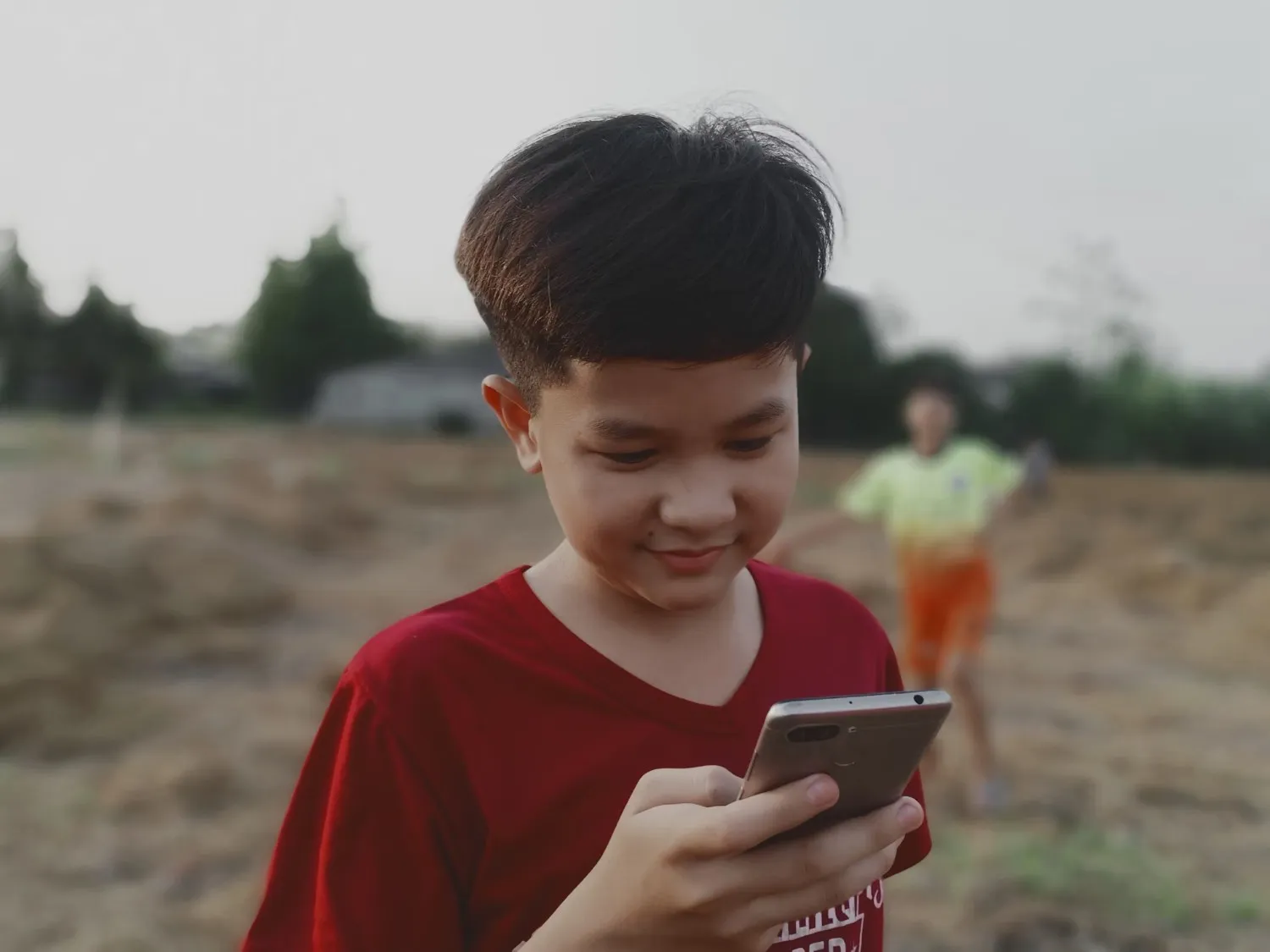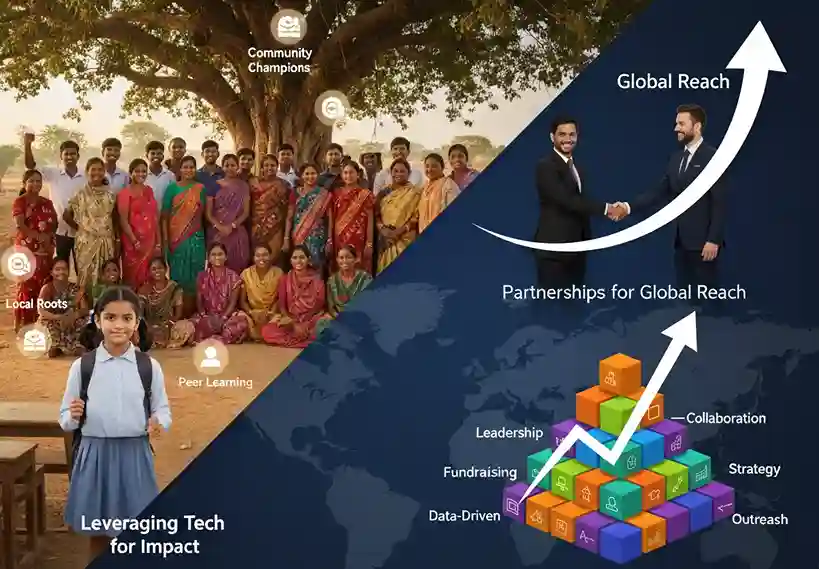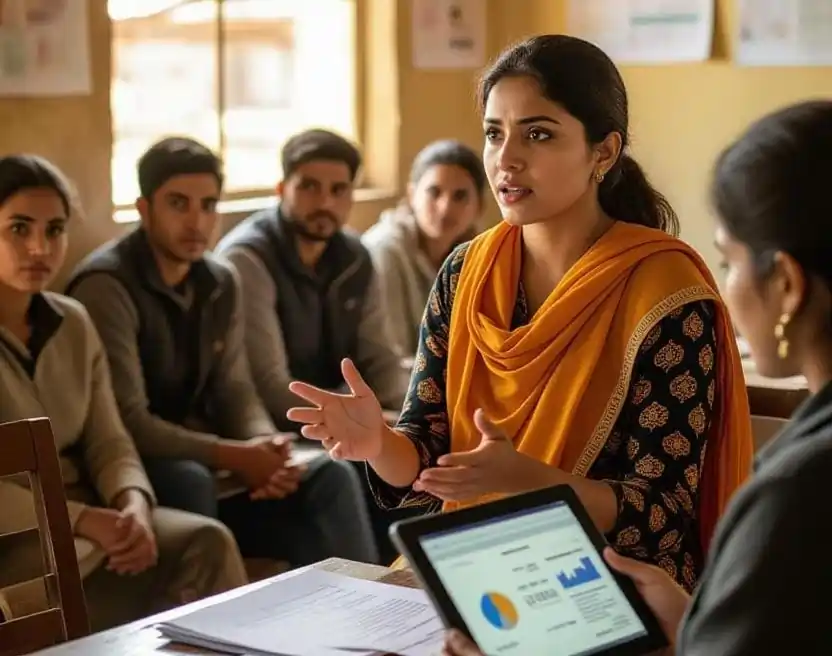Introduction: Can One Digital Gadget Change a Life?
As someone deeply moved by the widening gap between children with access to technology and those without, I often find myself thinking about 12-year-old Asha from a small village in Bihar, India. She had never touched a computer. Most days, her school had no electricity. But last year, everything changed when she received a solar-powered tablet preloaded with learning apps.
And here’s what I’ve come to believe: bridging this divide isn’t just about donating devices. It’s about giving children a fighting chance. It’s about digital literacy for underprivileged kids becoming not just a cause, but a right.
Witnessing transformations like Asha’s has opened my eyes to the stark digital divide that still shapes the future of millions. While some children are building robots in classrooms, others don’t know what a keyboard is.
Through this blog, I want to share not just facts, but stories, hope, and real solutions—because change isn’t a dream. It’s already happening.
To see how NGOs are working toward this goal, read our list of Top 10 Education NGOs in India.
What Is the Digital Divide and Why Does It Matter?

If you’ve ever had to troubleshoot a poor internet connection during a Zoom meeting, imagine a child who has never seen the internet. That’s the digital divide.
This divide affects children who live in rural areas, urban slums, or economically weaker households. For them, it’s not just about lagging behind in schoolwork—it’s about missing out on a future.
“In today’s world, being disconnected means being disadvantaged.”
I’ve seen the gap show up in ways that hurt:
- Access: No computers, smartphones, or even basic electricity
- Connectivity: Poor internet coverage or no infrastructure at all
- Literacy: Even when devices are available, many kids lack support to learn how to use them
When I learned that over 1.3 billion children worldwide lack home internet access (UNICEF), I realized the scale of the problem. But it also made me more determined to seek out and support digital education programs for children that actually work.
The Power of Digital Literacy for Underprivileged Kids
Digital literacy includes the ability to use technology effectively and responsibly—basic typing, browsing safely, using educational tools, and even understanding digital ethics.
For underprivileged children, digital skills unlock:
- Access to online education and remote learning
- Tools for creativity and self-expression
- Opportunities for future employment
- A sense of inclusion in a digitally connected world
One success story comes from Delhi-based non-profit Smile Foundation, which launched mobile classrooms equipped with tablets and trained facilitators. Children who had never attended school were soon navigating educational apps and speaking basic English—all thanks to digital skills training for underprivileged youth.
We’ve seen how emotional support plays a role in learning too—explore Why Emotional Well-being in Underprivileged Students Matters.
Barriers to Digital Inclusion: What’s Holding Us Back?
Despite good intentions, many initiatives to improve technology access for disadvantaged children still struggle. Common roadblocks include:
- Cost of devices and data
- Lack of digital infrastructure in rural areas
- Shortage of trained instructors or volunteers
- Language and content barriers (most online content is in English)
To understand how mental health intersects with learning access, read How to Recognize and Address Mental Health Issues in Underprivileged Children.
Solving these challenges takes a collaborative approach—government, NGOs, tech companies, and educators must all come together.
Top Digital Education Programs for Underserved Communities
Here are some remarkable non-profit digital literacy programs for underprivileged youth that are making a measurable impact:
1. Pratham's Hybrid Learning Program (India)
- Combines offline and online methods
- Teaches foundational digital and academic skills
- Tailored for children in slums and tribal areas
2. Code.org (Global)
- Offers free coding courses and resources
- Focus on girls and low-income communities
3. Hole in the Wall Project (India)
- Placed computer kiosks in low-income neighborhoods
- Children learned to browse and navigate entirely on their own
- Link to Hole in the Wall Project (India)
4. One Laptop Per Child (Global)
- Distributes durable, solar-powered laptops in remote regions
- Promotes educational technology for low-income students
- Link to One Laptop Per Child (Global)
These programs prove that with the right strategy, bridging the digital divide for low-income students is not only achievable—it’s sustainable.
Practical Solutions: How to Provide Digital Literacy for Underprivileged Children
If you’re a policymaker, educator, NGO, or just a concerned citizen, here’s how you can support digital inclusion for children:
1. Integrate Digital Skills into School Curricula
Even in schools with limited tech, introduce basic ICT concepts. Start with:
- Keyboard navigation
- Safe browsing
- Introduction to Google Workspace or Office tools
2. Set Up Community Tech Hubs
Unused libraries, temples, and even buses can become tech classrooms. NGOs like Teach For India have pioneered such models.
3. Use Mobile Phones Creatively
In many homes, a smartphone is the only device. Leverage WhatsApp, Telegram, and low-bandwidth learning apps to deliver content.
4. Partner with EdTech Companies
Collaborate with platforms like BYJU’S or Khan Academy to access customized resources for digital learning for disadvantaged youth.
5. Train the Trainers
Focus on preparing teachers and volunteers with digital pedagogy and tech support know-how.
For complementary strategies to improve learning environments, check out 9 Proven Stress Management Techniques for Students.
6. Localized Content Creation
Develop videos, e-books, and quizzes in regional languages. Keep it culturally relevant and fun.
Why It’s Urgent—and What’s at Stake
The COVID-19 pandemic widened existing educational gaps. Students without devices fell behind by years. And now, even as schools reopen, digital skills remain essential.
The longer we delay, the more the cycle of poverty strengthens. But with every child we digitally empower, we chip away at that cycle.
“You’re not just giving a child a screen. You’re giving them a voice.”
Digital literacy for underprivileged kids isn’t charity—it’s equity.
Conclusion: A Digitally Inclusive Future Is Possible
We cannot build a future-ready society without bridging the digital divide. The question is not whether we should act—but how quickly we can scale our efforts.
Whether you’re an educator introducing basic typing or a donor funding digital education programs for children, your role matters.
Let’s make sure Asha in Bihar and millions like her are not left behind. Instead, let’s give them the tools, the access, and the opportunity to rise.
Because when we teach a child to click, type, and search—we teach them to dream.
You can also explore Top 10 Child-Focused NGOs Making a Difference in India to support impactful programs.
💛 Donate to Support Mental Health Programs 💛
Your donation helps us fund:
- Emotional health toolkits for classrooms
- Training sessions for teachers and caregivers
- Mental health workshops and counseling support
- Art and play therapy sessions for children in trauma
Even a small monthly contribution can fund mindfulness materials, journals, or wellness kits for multiple children.
Want to see how effective digital platforms can amplify NGO impact? Check out The Power of NGO Websites: Examples and Key Elements.



















